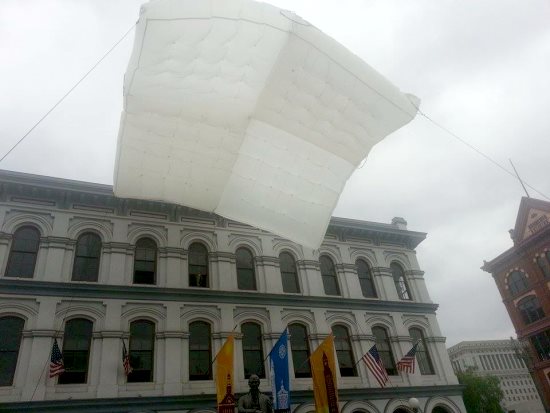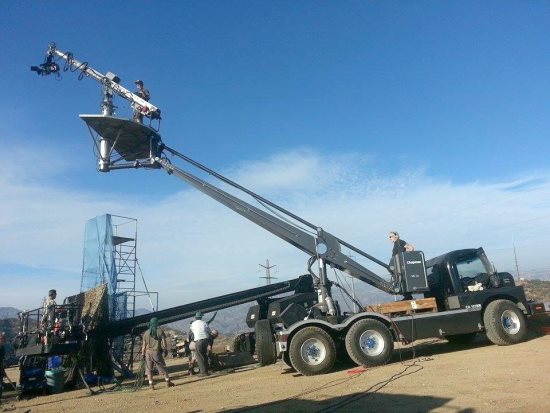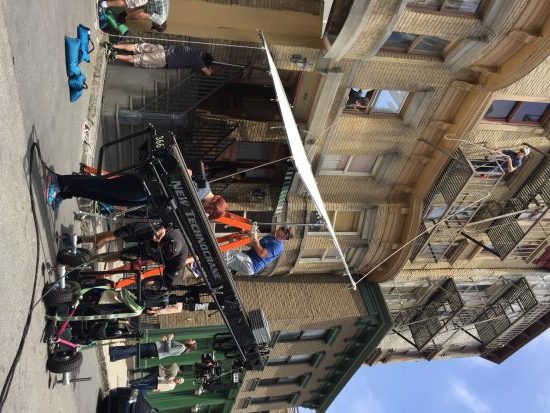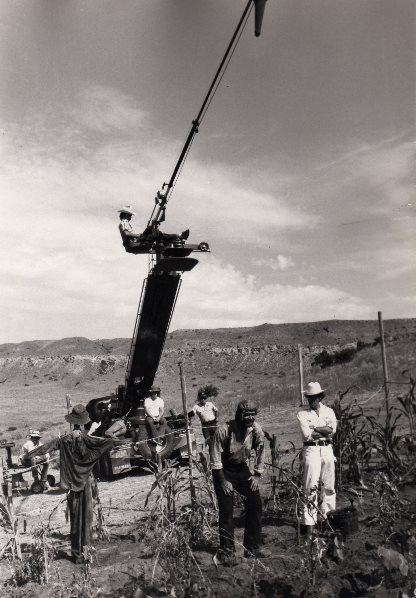by Devendra Cleary CAS
This is the first time I am sharing this experience. In June of 2002, I was the Boom Operator on a movie on the western slope of Colorado. I was now LA-trained and not afraid to show it. On this particular night, we were shooting on a farm, doing a fourteen-hour split day. We had multiple wires, long takes and the boom fully extended with a shotgun microphone in a zeppelin. As I look back and complain about my physical exertion that day, it still pales in comparison to the work of the grips.

We wrapped around 2 a.m., the end of a Fraturday, and I helped to load the sound gear into the truck. I got into my Toyota 4Runner and drove past the grips who were still wrapping in the dark. I headed down the ten-mile dirt road back to our hotel and was driving the same way I did for the past year: as if I was on the 101 freeway.
I was going 60 mph as I hit the curvy part. I fishtailed for a few turns before it was too late to recover, losing control of the vehicle and flipping the truck onto its side into a ditch. I was extremely fortunate, as I could have tumbled over and over, but the ditch stopped me. Escaping the vehicle out of the passenger door, my adrenaline was pumping and I was terrified beyond belief. I paced the dirt road, still in shock, but very grateful I was not seriously injured.

What was I going to do, walk to the hotel, call a tow truck or sleep here on the side of the road? My despair was lifted when I saw a pair of headlights headed my way. It was the grips; they spotted my overturned truck and me. Without any hesitation or conversation, the key grip and the best boy grabbed a cluster of rock-climbing ropes and proceeded to attach a tie-off to the bottom of my truck and to their front tow hitch. It was done with precision and efficiency as if they had done this a thousand times before. Within seconds, they had my truck flipped back on its wheels.
Now what to do with the traumatized Boom Operator? They split up and the best boy grip drove my truck back to the hotel. I was a passenger somewhere, but honestly to this day, I have no idea which vehicle I rode in. What a night.

This was the first week of the movie and up until this point, I think all I did was try and convince these guys how awesome and experienced I was without showing the proper respect that they deserved. These amazing people who came to my rescue humbled me. Colorado Local 7 Grips, I am forever in your debt. I believe they were doing what any grip would do in this situation. I am grateful and have carried my respect for their entire profession since.
We know them as Local 80. The grips are more invisible than we sound and video professionals. The layman may look at them as crew members who put sandbags on camera tripods, hold stands when it’s windy, move set walls, build scaffolds or lay dolly track. But these are gross oversimplifications of the work that these highly sophisticated, and trained professionals do every working day. They are not laborers, yes, they may do a ton of manual labor, but film sets have an uncanny way of utilizing people’s talents in laborious ways. They do so much more.
The first assistant director may be in charge of your safety, but the grips are the ones who are really looking out for you. They keep you safe by properly rigging and operating the cranes, the ‘20 bys,’ camera risers and everything that supports the work of the camera and lighting departments. Now do I have your attention?
I was working on season one of Murder in the First and had my hands full with a “Burning Man”-style set of party scenes with plenty of dialog, playback and VOG for three hundred extras. I had enough time to watch the grips while they mounted a small Technocrane to a Chapman and then take that magnificent rig to its highest point, effortlessly, giving the director exactly what he wanted. Then the director changed his mind and they skillfully gave him exactly what he wanted … again. The key grip was giving instructions over his walkie, taking care of the needs of camera as well as an extremely complicated lighting setup. The grips have to have the same level of sophistication as the camera department, yet they never get treated like the royalty camera does.

I think when we ask them to help us rig a plant microphone, a flag to kill a nasty boom shadow or help video assist rig an antenna, they must be amused at the simplicity of these tasks. These guys and gals are my heroes.
Speaking of heroes: A Sound Mixer whom I have idolized since the beginning of my career by the name of Agamemnon Andrianos CAS, speaks fondly of our grip brothers. He says: “But that dynamic when you’re working with the grips. I put them first because they’re the CEMENT of the whole crew.” Cement. They are rockhardened yet malleable cement. They bond the whole crew together. We couldn’t do any of this without them.
As I moved from Utility to Boom Operator to Music Playback Operator and then to Production Sound Mixer, I felt a divide between the grips and myself. I noticed my Utility and Boom Operator were more acquainted with the grip side than I am now as the Mixer. They knew each other’s names before I did, forged camaraderie before I did and I was envious. Fortunately, this was a multi-season assignment, so I was able to adjust my flawed dynamic and forge the friendships that I needed.
The grip department on my last show was incredible and I cannot let their talents go unnoticed. One day, we were shooting an exterior on New York Street at Fox Studios. The grips were wrangling their daily task of positioning and operating our Technocrane. This in itself was a fulltime job. The grips were also responsible for the massive metal frames that held the silks. Sometimes the wind picks up unexpectedly and the combo stands that are supporting the frames are compromised and need to be additionally secured by ropes for them to be safe for the actors and crew. Like the choreography of a synchronized swimming team, they sprung into action and had the rig secured in under two minutes. They all knew their part; who’s going up high, who’s on what stand. Simultaneously, tying their “sheep shank,” “bowline” or “clove hitch” knots. All low key, under the radar, with speed and always with safety first.
The grips seem to be something different to all of us. To the AD staff, they may just be the equipment movers who are constantly asking them to get out of the open doorways. To producers and UPMs, they are necessary manpower that they would love to minimize, if they can. To the camera department, they are their unsung heroes, for they know they can’t do the job without them.
Local 80 Dolly Grip Adam Eichhorst points out, “We have to have the strength of a weightlifter with the grace of a ballerina.” These guys push a 500-pound dolly with two people on board, hitting precise marks, starting and stopping with absolute style and grace. To the sound department, they are collaborators in shaping light for the Boom Operator. The grips likeliness to assist sound has every thing to do with our relationship with them. Their help can sometimes be “on-the-fly,” as sound is not their top priority. But I have found the stronger and more organic our department’s relationship is, results in more collaboration. It should serve as a lesson on how we interact with every department on any film set.
Why did I want to give praise to the grips? Because I love drawing attention to misunderstood and sometimes underappreciated professionals. There is still a difference in awareness of their intricate contributions depending on whose looking glass we’re looking through. They deserve to be put on a pedestal for what they do. This will only reinforce the grips who already know they are the gods of film production, and also empower grips.
If you’re not already doing so, show the grip side some love. Thank a grip, hug a grip and tell a grip their daily efforts aren’t going unnoticed. Let them know they truly are our filmmaking cement.